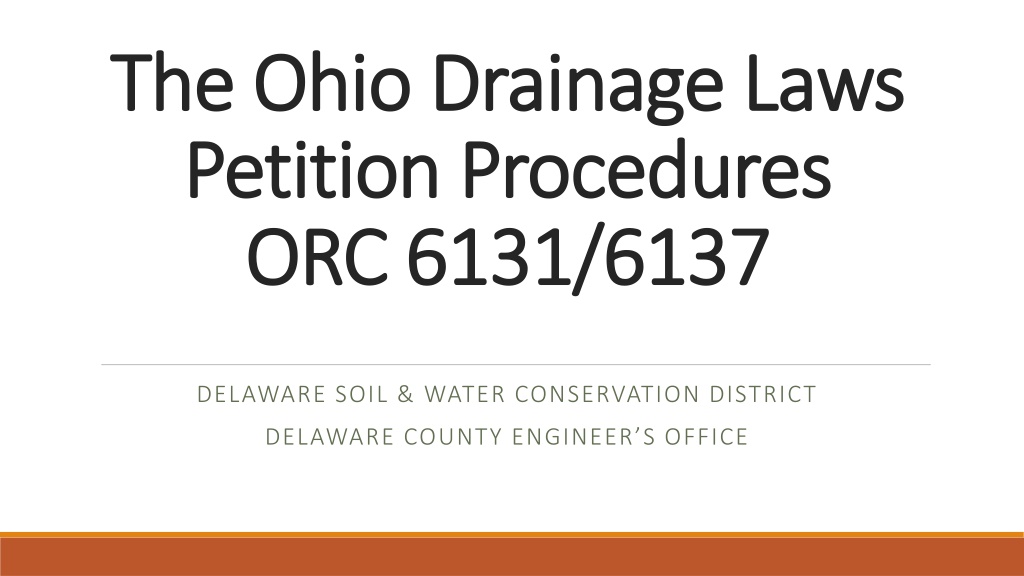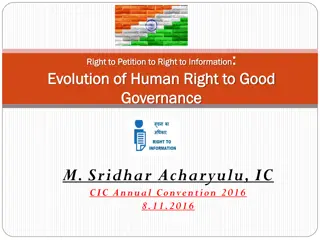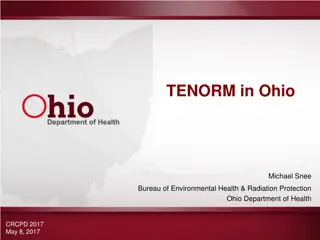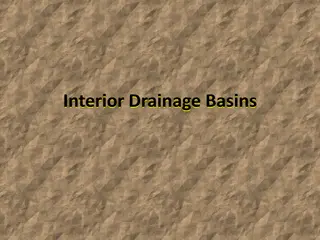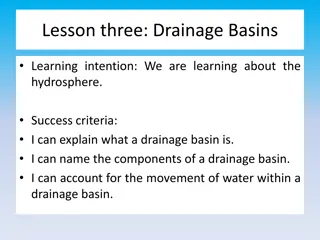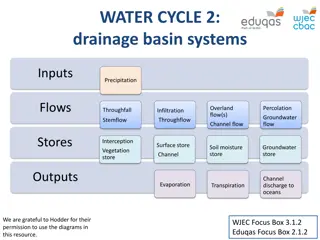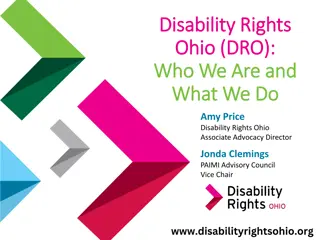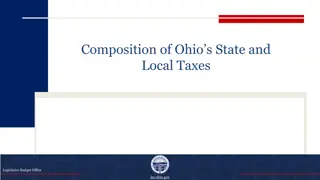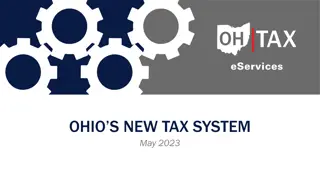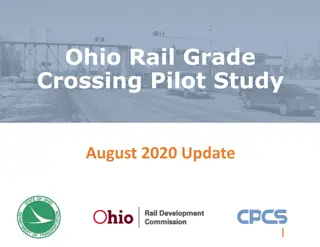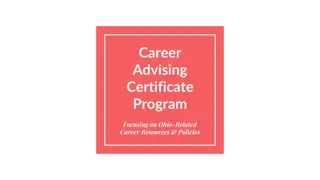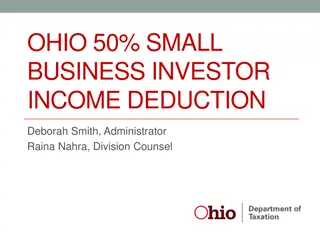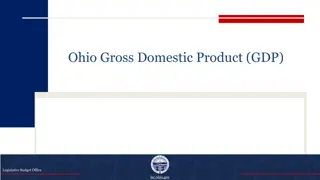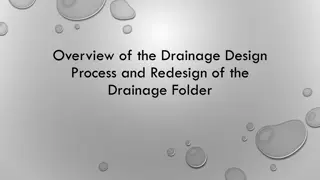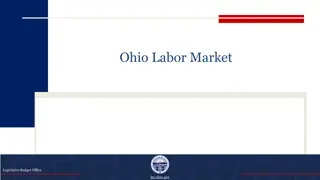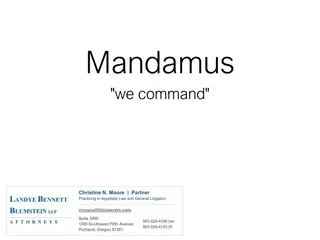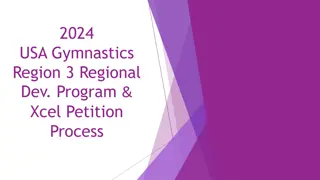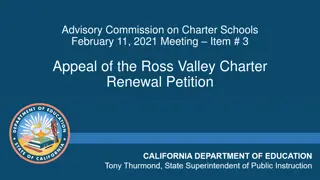Understanding Ohio Drainage Laws and Petition Procedures
Ohio's drainage laws, specifically ORC Chapter 6131, govern procedures for addressing drainage issues between private landowners. Landowners seeking solutions for drainage problems can collaborate, file a civil lawsuit for damages, or utilize the ORC 6131 petition procedure. The laws grant government entities the authority to undertake drainage projects benefiting private properties within the state. Contact Bret Bacon, Resource Conservation Program Coordinator at Delaware Soil & Water Conservation District, for assistance. Various options exist for addressing drainage problems, including cooperative efforts and legal remedies. Genoa Township is responsible for drainage within the Lanetta Lane Subdivision, which lacks a sufficient outlet, highlighting the need for comprehensive stormwater improvements. The Ohio drainage laws emphasize the civil nature of drainage matters and provide a framework for implementing multi-property drainage improvement projects.
Uploaded on Sep 26, 2024 | 0 Views
Download Presentation

Please find below an Image/Link to download the presentation.
The content on the website is provided AS IS for your information and personal use only. It may not be sold, licensed, or shared on other websites without obtaining consent from the author. Download presentation by click this link. If you encounter any issues during the download, it is possible that the publisher has removed the file from their server.
E N D
Presentation Transcript
The Ohio Drainage Laws The Ohio Drainage Laws Petition Procedures Petition Procedures ORC 6131/6137 ORC 6131/6137 DELAWARE SOIL & WATER CONSERVATION DISTRICT DELAWARE COUNTY ENGINEER S OFFICE
Contact Information Bret Bacon Resource Conservation Program Coordinator Delaware Soil & Water Conservation District 740-368-1921 Bret-bacon@delawareswcd.org
Why are we here? Landowners contacted SWCD seeking assistance with solving drainage problems The likely solution to the known drainage problems would require work on more than just a single property No project has been proposed and any potential scope is not known at this time This meeting is strictly informational in nature
Lanetta Lane Subdivision Subdivision was constructed in parts from 1997 - 2005 No comprehensive stormwater improvement as part of the development Genoa Township is responsible for drainage within the ROW which lacks a sufficient outlet
What are the options for addressing drainage problems? 1. Landowners work together on a cooperative basis to enact a solution. 2. File a civil lawsuit -Usually only to recover damages from negligence -Neglect is not usually considered negligence -Not a guarantee of a true solution 3. Utilize the ORC 6131 petition procedure
What are the options for addressing drainage problems? The State of Ohio treats drainage as a civil matter between private landowners Precedent case law governs, No Drainage Police ORC 6131 and its companion statutes are the only sections within the Revised Code that speak to drainage on private property It is the only section of Ohio law that gives any unit of government the authority to undertake drainage projects to benefit private properties
ORC Chapter 6131 Commonly known as the County Ditch Petition Law Intended for multi-property, watershed scale drainage improvements Provides a means for all landowners receiving benefits from a drainage improvement project to share in the construction and maintenance costs of the project There are separate sections that address multi-county and multi-state projects
ORC 6131: What improvements may be requested? Construction, reconstruction, or any change in the course, location, or terminus of any ditch, drain, subsurface drain, watercourse, or floodway The removal of obstructions such as silt bars, log jams, debris, and drift from any ditch, drain, watercourse, floodway, river, creek, or run
ORC 6131: What cannot be requested? Breaking watershed Punitive actions Parcel-specific improvements Making a jurisdictional stream straighter-deeper-wider (but we can do logjam removal)
ORC 6131: Single County Petition Procedures 1. Petition filed by landowners or public body 2. View 3. 1st Hearing 4. Preparation of plans and assessment schedule 5. 2nd Hearing 6. Bidding & Construction 7. Levying of Assessments 8. Maintenance
ORC 6131: Filing the Petition Filed with the Clerk of the Board of County Commissioners Requires a $500 bond (plus $2 for every parcel over 200 parcels), can be split between landowners May be amended up until the close of the 1st Hearing Consultation with SWCD and County Engineer recommended prior to filing any petition The petition request is a big factor in setting the scope of a project
ORC 6131: Petition Scope Landowners set the upstream extent of a petition project, engineering specifications set the downstream extent Only by signing the petition can a landowner specifically request for the improvement to be brought to their property Signing the petition as a show of support is permitted Signing the petition does not obligate you to testify in favor of the petition if you change your mind
ORC 6131: Petition Filed Commissioners formally accept the petition View is scheduled not less than 25 nor more than 90 days after the date the petition is filed 1st Hearing is scheduled not less than 10 nor more than 90 days following the View Notices are sent via certified mail and official legal notice placed in the Delaware Gazette Notices are sent to address on record with County Auditor
ORC 6131: View View allows Commissioners, Engineers, and interested land owners to gather field information on the project Typically is held somewhere in the project area, but has been done by drone video as well Is considered a formal meeting of the Commissioners Questions can be asked but no testimony is taken Landowners are permitted to point out specific points of interest
ORC 6131: 1st Hearing County Engineer files a preliminary report which includes a cost estimate, statement of feasibility, and general cost/benefit analysis Testimony is taken by those both for and against the petition Commissioners vote to approve or dismiss the petition
ORC 6131: 1st Hearing 3 Tests: Is the project necessary? Is the project conducive to the public good? Do the benefits exceed the costs? Bond is returned if the project is approved at the 1st Hearing No changes may be made to the petition or the scope of a project after the 1st Hearing Landowners have until the close of the hearing to add their name to the petition
ORC 6131: Preparation of Plans County Engineer, or their representative (SWCD), surveys and develops plans and cost estimates for the project Engineering done per specifications of the USDA Natural Resources Conservation Service and the Ohio Department of Transportation Petition request determines the upstream extent of a project, engineering standards determine the downstream extent Goal is to develop the Best, Least-cost solution that meets the request of the petition
ORC 6131: Preparation of Plans Watershed is looked at in more detail as part of survey and design Important for proper engineering as well as schedule of assessments We use all and any available sources of data including consultation with landowners
ORC 6131: Schedule of Assessments Each parcel in the watershed is assessed a portion of the cost of constructing and maintaining the proposed improvement Determined on a parcel-specific basis Only assessed for improvement which is downstream All parcels assessed including rights-of-way, those owned by local or state government, utilities, schools, churches, etc. Parcels assessed for the amount of benefit that will be received from the project
ORC 6131: Benefits advantages to land and owners, ,resulting from drainage, conservation, control and management of water, and environmental, wildlife, and recreational improvements. Uplands which have been removed from their natural state by deforestation, cultivation, artificial drainage, urban development, or other man-made causes shall be considered as benefited by an improvement required to dispose of the accelerated flow of water from the uplands.
ORC 6131: Benefits According to the Ohio Revised Code BENEFIT = USE
Delaware County Model for Assessments ORC does not specify the methodology for calculating assessments Delaware County uses a 4-factor method widely used throughout the state Acres Benefited, Land Use, Percent Use, Remoteness Factors applied on a parcel-specific basis
Delaware County Model: Acres Benefited Parcel A: 24 Ac, all in the watershed Parcel B: 25 Ac, but only 12 in the watershed Parcel C: 22 Ac, 20 of which are in the watershed
Delaware County Model: Land Use Least Benefit Most Benefit Woodland Agricultural Developed Residential Commercial/Road Rights-of-Way Undeveloped Residential
Delaware County Model: Land Use Parcel C: 20 Ac benefited 5 Acres Homesite -1 Ac Developed Residential 11 Acres Agricultural 4 Acres Woods -4 Ac Undeveloped Residential
Delaware County Model: % Use Parcel A uses 100% of the improvement Parcel C uses 70% based on their downstream property line Parcel B s drainage enters further downstream thus it only uses 30% of the total improvement 30% 100% 70%
Delaware County Model: Remoteness Factor Gives a reduction in assessments for parcels located further away from the constructed improvement Assigned in mile increments 0 0.5 miles: Remote = 1.0 0.5 1.0 miles: Remote = 0.9 1.0 1.5 miles: Remote = 0.8 30% 100% 70%
Delaware County Model: Assessment Formula Acres Benefited x Landuse Factor x % Use x Remote Factor = Parcel Assessment Factor Parcel Assessment Factor / Total of Assessment Factors = % Share Parcel Assessment = % Share x Total Cost
Delaware County Model: Subdivision Assessments All parcels within a subdivision benefit equally from drainage improvements within the subdivision due to the shared interest in the community infrastructure Community perception affects all of the lots Costs are spread out on a equal parcel basis as opposed to the traditional formula Can be used in conjunction with the traditional formula in a hybrid approach
ORC 6131: 2nd (Final) Hearing Commissioners hear all information, plans, and reports submitted by the County Engineer Testimony is again taken from those both for and against the project Commissioners vote to either approve the proposed improvement, including the project plans and schedule of assessments, or to set aside their original order and dismiss the petition Commissioners are the judge and jury there is no vote taken among the land owners
ORC 6131: 2nd Hearing Commissioners decision is again based on the 3 factors specified in the ORC: Is the project necessary? (Is it needed, can it be solved without the petition process?) Is the project conducive to the public welfare? (Is there a community benefit to be accomplished by improving the drainage) Do the benefits of the project outweigh the costs?
ORC 6131: Appeals Any owner opposed to the dismissal of the petition at the 1st or to the approval or dismissal at the Final Hearing may appeal the decision of the Commissioners to the Court of Common Pleas An attorney is often employed for an appeal
ORC 6131: Bidding & Construction County Engineer advertises for public bid Contract awarded to lowest and best bid County Engineer, or their representative (SWCD) supervises the construction of the project to certify that it is being completed according to the approved plans and specifications
ORC 6131: Bidding & Construction Bids cannot be accepted in excess of 2nd Hearing estimate Projects are not typically subject to prevailing wage Upon completion, the approved schedule of assessments is reduced pro rata by the difference between the estimated and actual cost Projects are not allowed, by law, to exceed the estimate presented at the 2nd Hearing
ORC 6131: Paying Assessments Can be paid in full up-front within 30 days of the 2nd Hearing Commissioners can extend payments up to 15 years typically the repayment period in Delaware County is 8 years If they choose to bond, interest, financing fees, and Auditor/Treasurer collection fees are applied to any assessment not paid up-front
ORC 6131: Paying Assessments Why the 30-day period to pay upfront? 1. It s what the law tells us to do. 2. Allows the Commissioners to know the amount of Bond or General Funds needed to build the project.
ORC 6137: Drainage Maintenance ORC 6137 enacted in 1957 All projects completed under ORC 6131 are placed on the County s Drainage Maintenance program following completion and easements for maintenance are created by Commissioners resolution and recorded County Engineer has general charge and supervision of the Maintenance program Maintenance assessments are levied annually and are based on the final schedule of assessments for the constructed project generally 3-5% of construction assessment
ORC 6137: Drainage Maintenance Maintenance funds are project-specific All projects on Drainage Maintenance are inspected annually (or more frequently if needed) Land owners may make requests to the Drainage Maintenance Program SWCD handles design, construction, and maintenance in partnership with the County Commissioners and County Engineer Purpose of Drainage Maintenance is to keep the project operating at its original design capacity
ORC 6131/6137: Summary No petition request has been made at this point A cost estimate of a potential project cannot be made yet The petition process is entirely landowner-driven and landowner-funded One signature and the $500 bond is required to initiate the petition process Public participation is needed and encouraged throughout the process
ORC 6131/6137: Summary Signing the petition allows for improvements to be designed to a property Signing the petition does not obligate you to testify for a petition nor prohibit you from testifying against a petition All parcels are assessed regardless of whether they have signed the petition SWCD/County Engineer will not advocate for or against a project
ORC 6131/6137: Summary How long does the process take? It depends on the complexity of the project, but on average 2-3 years Typically 6 months from the time a petition is filed to the 1st Hearing Engineering averages 2 years based on workload Petitions are generally addressed on a first-come, first- served basis
ORC 6131/6137: QUESTIONS? This presentation has outlined the main provisions of the Ohio Drainage Laws Petition Procedure. It is not intended to be a complete transcript of Ohio Revised Code 6131 or 6137. In specific cases, direct reference should be made to ORC 6131, 6133, 6135, and 6137. In many instances, the assistance of a qualified attorney may be necessary. Sources: The Ohio Drainage Laws Petition Procedure: Bulletin #428, The Ohio State University Cooperative Extension Service, Nolte, Byron H., Revised April 1985. Ohio Revised Code, Sections 6131, 6133 and 6137
